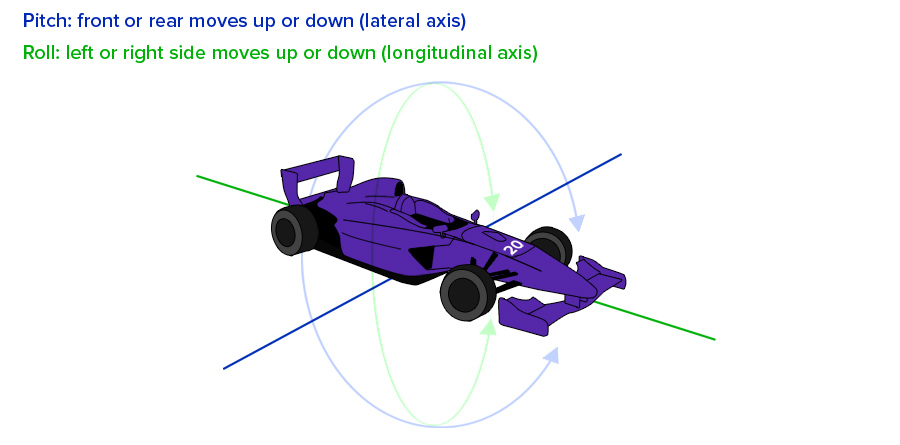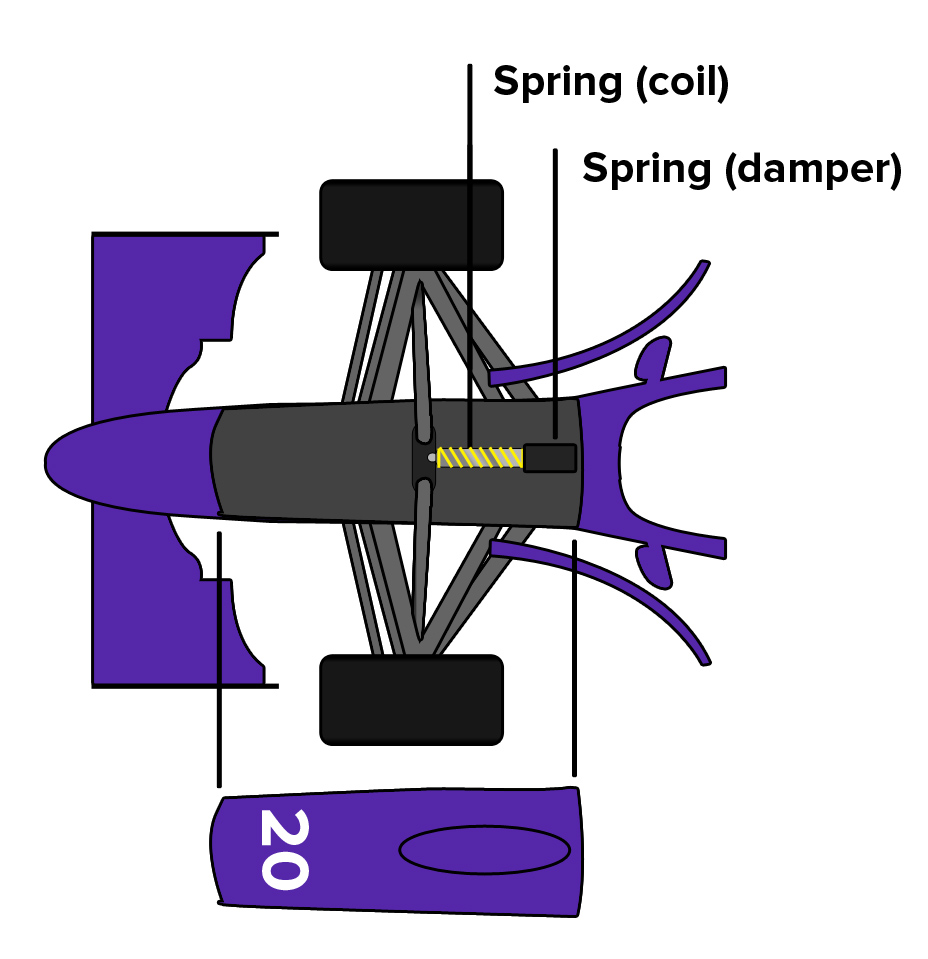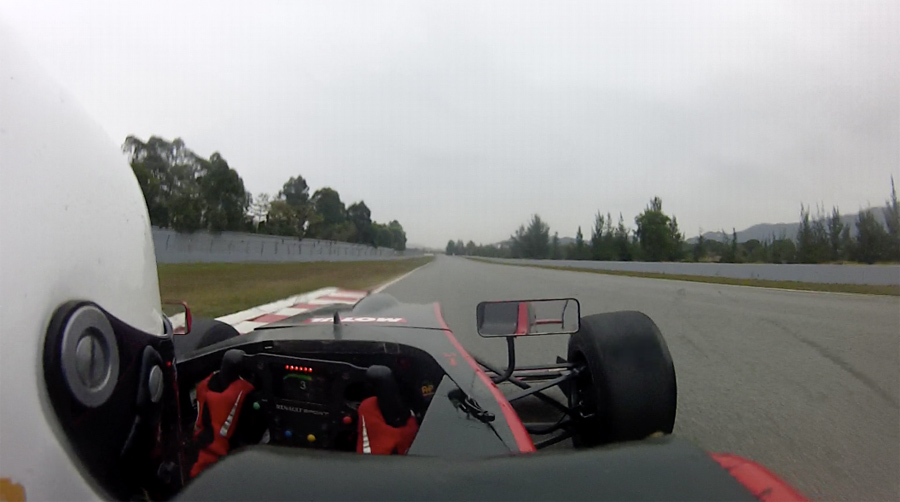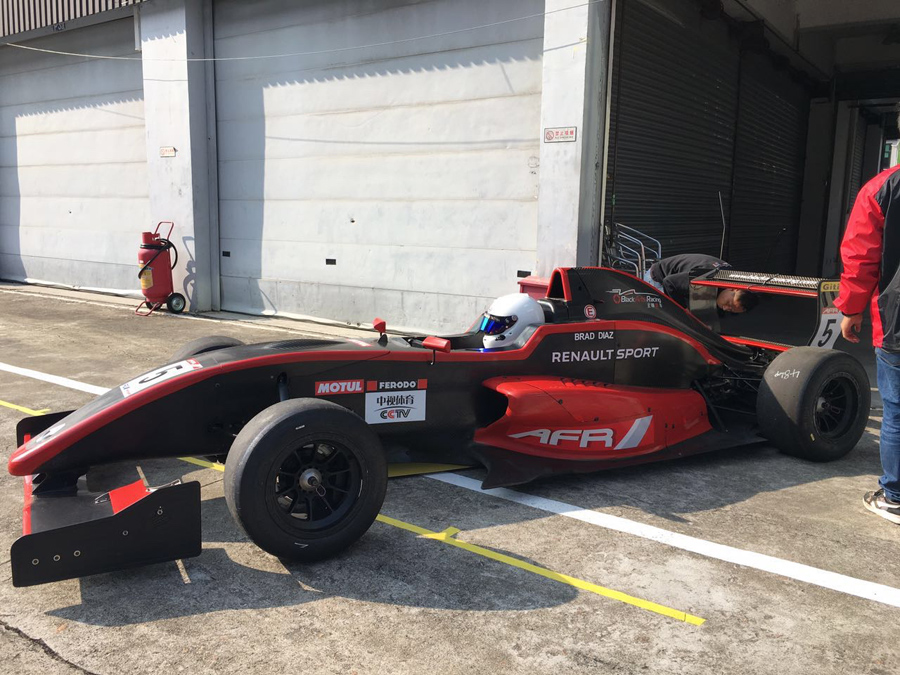 (If you haven’t read article 5.3 about anti-roll bars, please do that first, because this article builds on the same basics of physics.)
(If you haven’t read article 5.3 about anti-roll bars, please do that first, because this article builds on the same basics of physics.)
From the Skip Barber, we progress into a faster and more complex car: the Formula Renault 2.0. The FR 2.0 has more setup options available, including an important one, which will vary greatly between circuits: the selection of front and rear springs. The spring rates hugely affect mechanical grip, but also aerodynamics, which may surprise you.
The most common type of spring used in race cars is the coil spring, which is typically installed together with a damper (see picture). For this article though, we’ll focus solely on the coil spring, and ignore the damper until a later article.
Spring rates and their effects
The spring rate is the measure of spring stiffness, and represents the amount of force required to compress the spring a certain distance. It’s measured in Newtons per millimeter (N/mm) or pounds per inch (lbf/in).
- A higher spring rate gives a stiffer spring, so there’s less displacement per unit of force (the spring compresses less easily).
- A lower spring rate gives a softer spring, which allows more displacement per unit of force (the spring compresses more easily).
A spring rate adjustment affects the following:
- Weight transfer causes the ride height to change. For instance, during braking a car with softer front springs compresses more on the front, which pitches the car forward (dynamic reduction of ride height at the front). This impacts the mechanical grip of the car, because it changes the center of gravity. Aside from mechanical grip, an increased pitch (also known as rake) may also have aerodynamic effects, because the angle of the car changes. And during cornering, lateral forces cause the body to ‘roll’ which compresses the springs on the outside tires. Stiffer springs will reduce body roll. See the illustration for the difference between pitch and roll.
- Aerodynamics will cause the ride height to change. For example, softer springs will compress more on the straights, as higher speeds generate more downforce. Lower dynamic ride heights are advantageous in reducing aero drag (unless the floor is scraping the track!).
- The ‘bounciness’ of the car. For example, with stiffer springs, going over bumps and curbs may cause one or more tires to get momentarily unloaded or completely lose contact with the track, which would cause handling issues. Going with softer springs could solve the ‘bounciness’, but in return could hurt the pitch and roll attitude of the car, and may influence suspension geometry (such as camber), and consequently hurt aerodynamic effects and possibly cause aero-related handling issues.

As we see, springs don’t control a single variable in a straightforward way. So, finding the optimal spring rate is a matter of finding the right trade-off between the above effects, which is often a compromise. In practice, when setting up the car, adjusting spring rates comes in handy when optimising aero effects, and the tradeoff is typically between aero related time gains (lower drag on the straights) and car handling (more downforce in the corners).
The nature of the track would typically determine the baseline you start tuning from. With this we mean the bumpiness of the surface, and the lengths of the straights, and whether there are many fast or slow corners.
On tracks with fast straights and many flat, slow corners (such as Gilles Villeneuve, Montreal), you’d like to start with stiff front springs and soft rear springs. Such a setup would produce more rake (and downforce) in the slow corners and less drag on straights.
On tracks with short straights and a wide range of corner speeds (such as Motegi), you’d like to start with stiff springs on both the front and the rear. This would allow you have a car with more consistent aero performance in all corners regardless of speed.
Most tracks are in-between, so you’d want to pick a baseline for the overall profile, then look at the track specifics. For example, a bumpy slow track like Sebring could need softer springs.
Applying it to the FR2.0
Let’s get to know the suspension layout for the FR2.0. As you can already see in the setup-screen, there is only one center mounted spring and damper in the front, with non adjustable ARB. In the rear are two separate spring and damper units. Unlike the front ARB, the bar in the rear is adjustable in stiffness.

This single spring design at the front is called a monoshock. It is characteristic of a monoshock that the front spring has no effect on roll-stiffness. It only provides stiffness in heave (vertical) motion. This essentially causes spring stiffness to have no significant effect on the mechanical balance (lateral load transfer distribution and roll) of the car. And so the front roll-stiffness is solely controlled by the front ARB, which is adjustable in the real car, but is fixed in iRacing.
In contrast, with the two springs at the rear of the car, roll stiffness is influenced by both the adjustable rear ARB and the rear springs. In practice, you wouldn’t make spring rate adjustments to affect roll-stiffness. If a spring rate adjustment (for a different reason) results in undesired impact on roll-stiffness, you’d counter that effect with an ARB adjustment.
The regulations allow the FR2.0’s ride height to be very low, as a consequence you can run the stiffest front springs and still achieve your desired front ride height. This simplifies the front spring rates setup. In general, aim to run the stiffest springs that still allow you to go over bumps (if a curb is giving problems, you may not want to counter it through setups, but just avoid hitting it). Finding out the optimal rear spring rates will mostly be a matter of how much you want to vary the dynamic ride height in the back. Stiffer rear springs give you a more consistent handling through the corners, while softer rear springs will give less drag on the straights.
Over to you
Try fiddling with the spring rates, and see if you can improve your laptime with it. For instance, load a session at Silverstone Historic. The circuit has fast corners and fast straights, so a compromise is needed between the two baselines suggested above. You pick either baseline as a starting point, for example stiff front and soft rear. From there stiffen the rear and see if it leads to laptime improvements. Because the rear spring rate changes multiple parameters of the car, such as the ride height, you could correct those accordingly to maintain the same static ride height. You can also use the anti-roll bar to help restore the balance of the car, just never change it together with the spring rates, because it makes it hard to tell which change is causing which effect.

 Having recently signed with reigning Asian Formula Renault champions
Having recently signed with reigning Asian Formula Renault champions 

